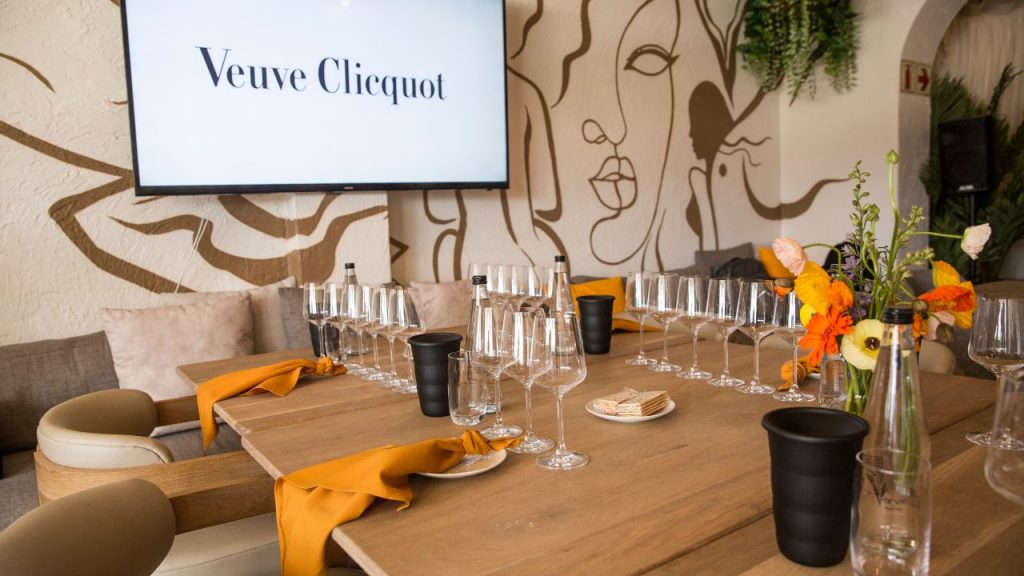Who wouldn’t love a champagne brand that proudly lives according to their motto: ‘Only one quality, the finest’?
The French champagne brand Veuve Clicquot is no stranger on South African soil. We were privileged to sit down with winemaker Bruno Dagnee on his visit to South Africa to learn more about his journey in the industry, what makes Veuve Clicquot unique, the brand’s interesting history, and more.
By Bianca Muller
This year, Veuve Clicquot is celebrating its 250th birthday. The journey of the brand started in 1772 in Reims, France. One innovative 27-year-old woman took the reins in 1805 after her husband’s passing and she soon became known as La Grande Dame of Champagne. Madame Clicquot was one of modern times’ very first businesswomen, positioning herself firmly in the business world during a period when women did not have the right to work.
She had many creations under her belt, such as bottling the first recorded vintage champagne, making the first blended rosé champagne, and inventing a technique for clearing sparkling wine of cloudy yeast. She strived for excellence in her products and it’s here where her motto ‘Only one quality, the finest’ came to life. Bruno believes they have everything to owe to Madame Clicquot, because Veuve Clicquot’s fantastic history and huge legacy is part of what makes it so successful.
More about Bruno, the brand and the bubbly
Bruno has been in the industry for four years.
“To be honest, my first passion was sport. During the end of my short career as a tennis coach I was totally interested in wine and champagne,” he shares.
At the end of that period of his life, he decided to turn over a new leaf and start a new career. Today, he is a world-renowned winemaker for the spectacular champagne brand. He highlights being called to the cellar master’s office as a young trainer with the offer of working in innovation and development for Veuve Clicquot as a fantastic memory in his career.
Other than the weight of the brand’s history, Bruno credits their reserve wine and cellars as a contributing factor that makes their champagne stand out.
“We have a fantastic collection of reserve wine. It’s a little bit like a treasure that we keep precious in our wineries. We use at least 50% of this reserve wine in a bottle of Yellow Label so it’s really special.”
Other brands, he explains, only use 20-30% of reserved wine in their products.
“We also have special cellars where we keep our bottles for at least three years.”
We asked Bruno what it is that makes the perfect champagne, to which he answered with a chuckle, “The perfect champagne doesn’t exist.”
Instead, it’s all about finding a balance between structure, personalities, characters… And on the other side you need a lot of elegance, fineness and sharpness, as Bruno explains it.
“Only the best champagnes and reserve wines give you that.”
And when it comes to the best and worst food to pair with champagne, Bruno suggests that it’s best to steer away from sweet and sugary desserts. It will leave you with an intense bitter taste.
“The best pairing depends on three parameters,” he says. “Firstly, the flavour – you have to find a good balance between the champagne and the dish.”
The texture is also very important. “We often forget that wine also has texture. It could sometimes be very sharp or tight, and sometimes it could be more creamy and smooth.”
The last factor to take note of is the power of the dishes and the champagne. “If the wine is too strong and overpowering it will be a problem. And if the champagne is a little bit more acidic you will have problems with stronger dishes.”
Next time you pop a bottle of champagne at a celebration, keep these three parameters in mind for the best tasting experience.
Keep an eye out for our jam-packed Summer Issue (on shelves from 9 December) where we’ll have more fantastic tips from Bruno, just in time for the festive season and its celebrations.
ALSO SEE: Rosé Champagne chiffon cake
Feature Image: Photographer: Chanelle Naudt/HMImages

